• organic raw apple cider vinegar
• sterile needle (sterilize with a match or lighter, or clean with rubbing alcohol)
• cotton balls
• sterile needle (sterilize with a match or lighter, or clean with rubbing alcohol)
• cotton balls
Knowing
that I needed to get the ACV to penetrate past the surface of the mole,
I decided to gently poke the mole with a sterile needle. Fortunately,
there isn’t any nerve tissue in a mole, so it didn’t hurt a bit. I then
soaked a piece of cotton in ACV, and applied this to the mole for 20
minutes. This is what it looked like immediately after the first
application:
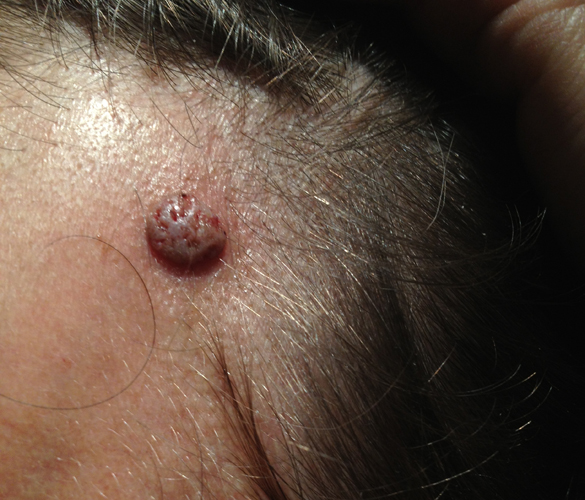
The
following evening I repeated the same procedure, gently poking the mole
with a sterile needle, and applying the ACV for about 20-30 minutes. As
you can see from the (blurry) photo below, there was some local
reddening after application, but no pain or irritation:
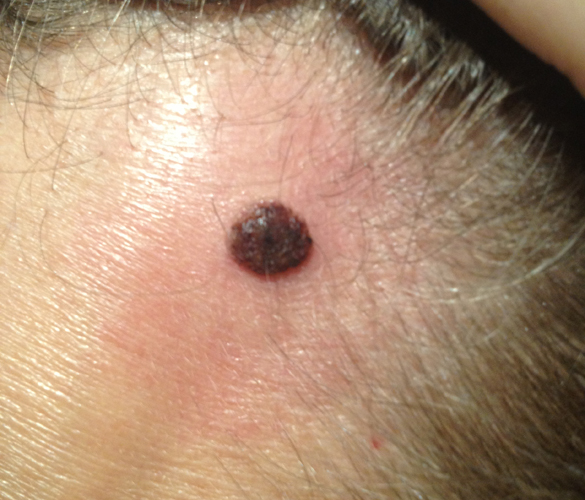
On
the third day, the mole was no longer looking like a mole – just like a
scab. Again I gently pricked the mole with the needle, but the mole was
greatly reduced in thickness, and it was easy to prick the skin below
which hurt. Again, I applied the ACV for about 20-30 minutes. This is
what it looked like on the evening of day three:
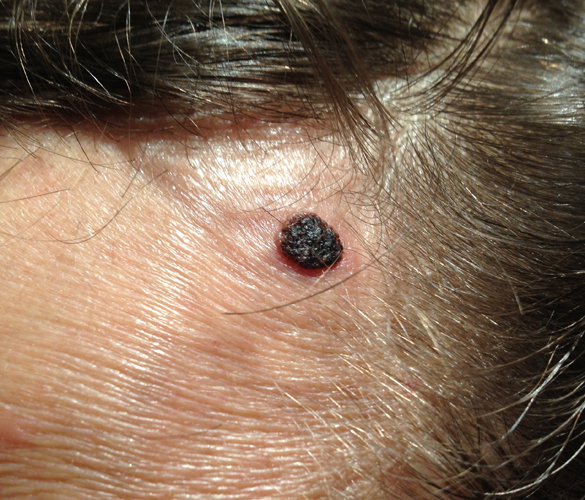
By
the fourth day my mole was, for intents and purposes, no longer mole,
but most definitely a scab. It took a lot for me not to fiddle with it
over the next day, because it was a little itchy and just kind of
hanging there. On the fifth day the mole-scab eventually came off, only a
fraction of the size of the original mole. This is what it looked like
after it fell off, with the fresh pink skin underneath:

Over
the next few days, I applied some comfrey/calendula/plantain, and saw
steady improvement in healing. By the end of the week any indication
that there was ever a mole on my forehead disappeared entirely:
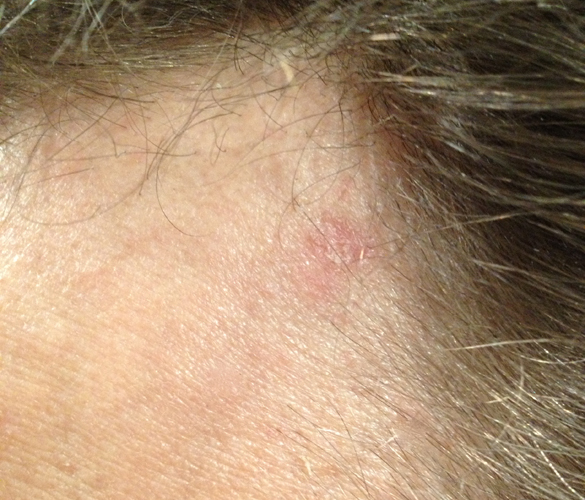
Now
two weeks later, and no re-appearance of anything mole-like growing
from that same spot, I would say that the treatment was a success. And
in fact I would say that the entire process was quite remarkable: a
rapid response with very little pain or discomfort, just some temporary
reddening of the skin after application:
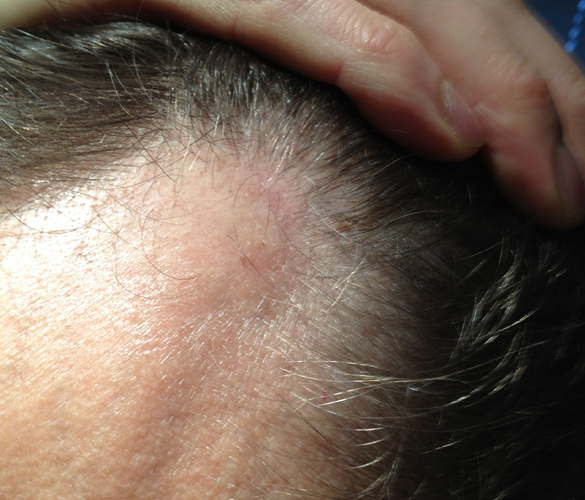
As
a result of my experiment with ACV and mole removal, I am inclined to
suggest this method for some of my patients that have the same issue. If
you have a mole, however, and what to remove it, please get it checked
out first to determine what kind of mole it is. For the removal of
benign moles, or nevi, the ACV method seems to be fine, but I would
caution against using this method for questionable moles such as
dysplastic nevi that might be cancerous. Although there are some sites
out there that extol the virtues of ACV for cancer, there isn’t any
clinical evidence that ACV alone can inhibit cancer. Likewise, the
belief that ACV makes the body alkaline, and that this prevents and
treats cancer, is a faulty concept that I have addressed elsewhere. Thus while ACV certainly is no panacea, it does have a number of benefits that should be considered.
One
of the things about getting older, is that you discover new things
about yourself. Like for example, the mole I had growing on the left
side of my head, just below my hair line. It never really drew my
attention until my hairline started to recede a little. Initially, it
was smooth and mostly flat, but over time it became dry and scaly, and
with these changes, it got bigger and bigger, about the size of a pencil
eraser. So there I was, with a receding hairline and a big mole
sticking out like a horn, large enough that my eleven year old daughter
would poke at it and say “eeuuh” on a regular basis. It finally got so
big that it would kind of catch on my shirt when I was taking it on and
off. Although it was very clearly a benign mole, or nevus, it was
getting to be a bit of an issue. So I decided to get rid of it. I
thought about a few different methods, and then happened upon a folk
remedy for removing moles with apple cider vinegar (ACV). Figuring I
didn’t have much to lose by trying it out, I decided to give it a whirl.
A little bit about ACV
Apple
cider vinegar is made by fermenting chopped apples in water and a
little sugar for several months. In the first stage the wild yeasts are
the dominant species, and utilize the sugars to produce alcohol. After
some time, as the yeast die off, they are succeeded by acetic acid
bacteria from the genus Acetobacter and others, which oxidize the
alcohol to produce acetic acid, or vinegar. Once this slurry is
strained, the bacterial colonies coalesce into a curious rubbery looking
substance called the ‘mother’, or in Latin, Mycoderma aceti.
This ‘mother’ serves as a repository of microbes in a quiescent state,
until such time you scoop it out and use it again, for example, to turn
left over red wine into red wine vinegar. Besides the acetic acid, ACV
also contains other naturally occurring acids including malic acid,
citric acid, and lactic acid. While the pH of ACV can vary considerably,
depending on methods of preparation, Bragg’s states that their ACV has a
pH of 3.075, and an acetic acid content of 5.14%.
ACV
gets a lot of positive press from natural food types, and many think
that it is a panacea for all kinds of issues including infection,
digestive problems, insulin resistance, and even cancer. While I have
always had a healthy respect for ACV, I was skeptical about many of the
claims, many of which are unsubstantiated. The enthusiasm for ACV in
particular appears to be a North American phenomena, evolving as part of
the Natural Hygiene movement of the early 20th century. Among the many
adherents of this belief in healthy food and fitness was Paul C. Bragg,
an entrepreneur and marketer that pedalled a variety of folk remedies in
the mid-1900s, including ACV. Marketed as a remedy to detoxify the
body, Bragg’s apple cider vinegar later became the centre-piece of his
company, and an icon in the natural foods industry. It is important to
note, however, that ACV is a traditional food, and many cultures extol
the virtues of its benefits. The best evidence for ACV’s benefits
relates to its antimicrobial and anti-infective properties, strong
enough to dramatically inhibit pathogenic strains E. coli,
just like the one that killed over 14 people in Germany in 2011, all
from eating contaminated cucumbers. It’s easy to appreciate that ACV
isn’t just a component of a tasty dressing, but an effective tool to
ensure that your salad isn’t going to inoculate you with some nasty
bacteria. Not only that, but soaking veggies in oil and vinegar in the
same manner as a Greek salad actually increases thebioavailability of nutrients.
Of course this won’t come as too much of a surprise to herbalists that
have been making medicinal extracts with oil and vinegar for millennia.
Other uses for ACV as an antimicrobial include using it for sore throats
as a gargle, and topically in the treatment of fungal infections
including yeast infections (Candida albicans), jock itch and athlete’s foot (Tinea spp.),and dandruff and seborrhoeic dermatitis (Malassezia spp.).
Another
traditional use for ACV is as a digestive stimulant, and to this end,
sometimes recommend it in diluted form as a way to stimulate intestinal
motility and appetite. In Ayurveda, vinegar is sour and pungent in
taste, hot and light in quality, and acts to increase the digestive
fire. The little bit of research on ACV suggests that it does indeed
have a stimulatory effect on digestive activity,particularly on motility,
and it may be this action which is responsible for its other attributed
effects. According to Ayurveda, when digestion is restored, the health
of the entire body benefits. The important thing, however, is to make
sure that you’re using it correctly, and with ACV, a little goes a long
way!
There
is also some evidence that ACV may have a favourable impact upon health
issues including obesity, insulin resistance and diabetes. In one study
from 2008, researchers demonstrated that ACV could improve the serum lipid profileof
experimentally-induced diabetic rats. In 2009, the results from a
Japanese clinical trial were published, showing that the consumption of
diluted ACV, 15-30 mL in 500 mL of water once daily, significantly
improved the metabolic health of obese participants, reducing obesity, body fat mass, and serum triglycerides. Since
then, however, there hasn’t been much research on ACV and its metabolic
benefits, most likely because nobody holds the patent on apple cider
vinegar. Just like the hydrochloric acid produced in the stomach, ACV is
capable of denaturing proteins, breaking them down into smaller peptide
chains. Thus the other significant body of research on ACV relates to
its erosive capacity, breaking down tissues in the human body. For
example, there is one case report of a chemical burn caused by the topical application of ACV. In another report, a 15 year old girl is diagnosed with significant dental erosion caused by drinking ACV for weight loss.
No comments:
Post a Comment